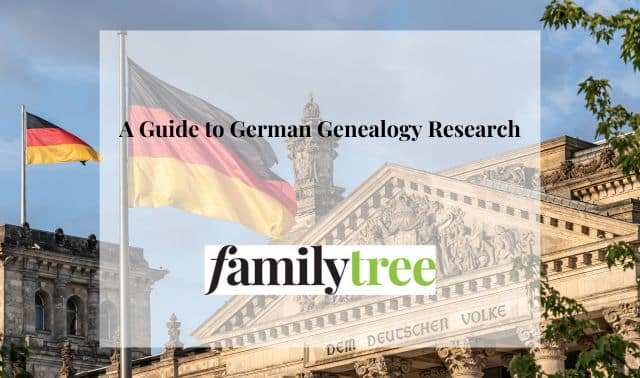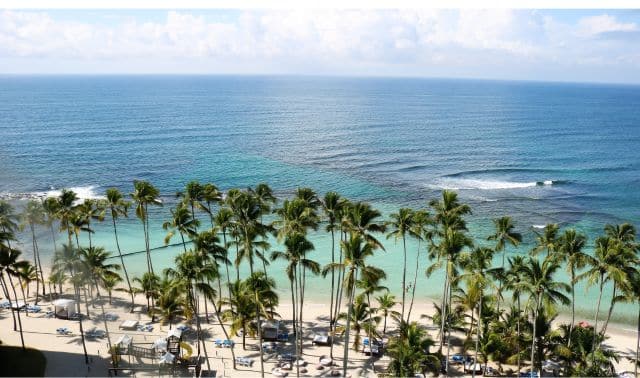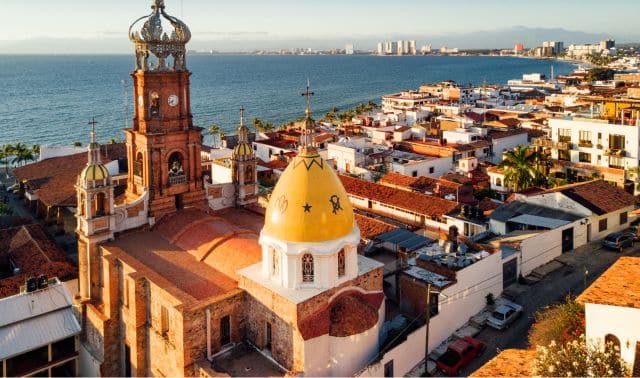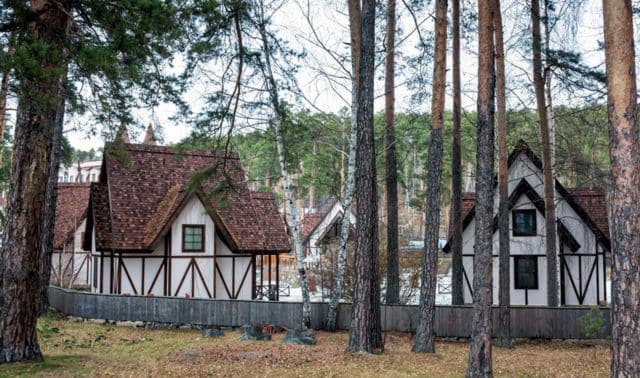Sign up for the Family Tree Newsletter! Plus, you’ll receive our 10 Essential Genealogy Research Forms PDF as a special thank you.
Get Your Free Genealogy Forms
"*" indicates required fields

Just two decades ago, if you were trying to trace your Ukrainian roots, you probably got used to having a lot of doors slammed in your face (both figuratively and literally). After all, the long-ruling Soviet regime wasn’t particularly cooperative: The government had a monopoly over information, and restricted who could access it. Even the most innocent query about your great-great-grandfather would likely be met with suspicion. Add to the mix a complex history and a limited availability of resources in North America, and genealogy research could feel like an exercise in futility.
But Ukraine eventually gained its independence. Many of those officially closed doors started to open. And in recent years, microfilmed records and online resources have begun to offer alternatives to expensive and obstacle-ridden long-distance research for the almost 1 million Americans of Ukrainian descent. Follow our guide to help you sort through the ups and downs unique to Ukrainian genealogy.
First steppes
“Anyone just starting out needs to be patient,” advises Matthew Bielawa, who lectures on Ukrainian and Polish genealogy and runs the website Genealogy of Halychyna/Eastern Galicia (HalGal). “You can easily become overwhelmed by the different languages and geographic/historic components.”
ADVERTISEMENT
He recommends reading up on Ukrainian history and geography before you begin. First lesson: “Many folks mistakenly say ‘the Ukraine.’ You wouldn’t say ‘the France’ or ‘the Italy,’” Bielawa notes. He adds that even those with roots in the country often know little about it, other than that it’s associated with Russia. Ukraine was once part of Russia, but today it’s independent.
Located in Eastern Europe, Ukraine is bordered on the north by Belarus, on the north and east by Russia, on the south by the Sea of Azov and the Black Sea, on the southwest by Romania and Moldova, and on the west by Hungary, Slovakia and Poland.
Ukraine was the center of the first eastern Slavic state, Kyivan Rus’, which during the 10th and 11th centuries was the largest and most powerful state in Europe. But it was weakened by internal quarrels and Mongol invasions. Various parts of what’s now Ukraine have at times been claimed by Russia, Poland, the Austrian Empire, Hungary, Romania and Czechoslovakia. Present boundaries were set in 1954, with the transfer of Crimea from the Soviet Union to Ukraine. Ukraine finally became independent in 1991. (In 2014, Crimea was illegally annexed by Russia.)
ADVERTISEMENT
Ukrainian lands have always been ethnically and culturally diverse. The rich soil and vast fields of wheat and other crops helped earn Ukraine its nickname as the “Breadbasket of Europe.” Today, its population numbers just more than 45 million.
Becoming comfortable with history and geographical terminology also will help you learn where genealogical records might be located and what language they could be in. “It’s not haphazard disorganization,” Bielawa notes. “If you know that your family is from Lviv in Western Ukraine, which was in Poland before World War II and in the Austrian Empire before World War I, you can understand why your ancestors’ records could be housed in either a Ukrainian or Polish archive. Vital records are usually in Latin with some Polish, Ukrainian and Church Slavic—a church language of the Eastern rite Catholics and Orthodox Christian. And if your family was from Uzhhorod in southwest Ukraine, you can expect to find some Hungarian records.”
“With a little background in history, you won’t be shocked to find an ancestor who was born in the Austrian Empire, attended school in Poland, married in the Soviet Union and died in independent Ukraine—all without ever leaving home,” Bielawa adds.
“The overwhelming majority of Ukrainians in North America have roots in western Ukraine or southeastern Poland,” writes John D. Pihach in his book Ukrainian Genealogy, considered by many as the authoritative guide to Ukrainian research. Pihach explains beginning research, names, locating ancestral origins, and records. You can borrow it from a library or purchase it here.
Novice researchers also can look to online resources as jumping-off points, including Bielawa’s HALGAL, the Ukrainian research outlines at Brigham Young University’s website, InfoUkes: An Information Resource about Ukraine and Ukrainians, and the FamilySearch Wiki pages for Ukraine.
Ins and outs
Ukrainian immigration to North America occurred in waves, Pihach says. We’ll focus on helping you find family in these three waves:
- Ukrainians began arriving in large numbers in the United States by 1870, most to escape tzarist rule. Some went to Alaska before the United States purchased it in 1867, with many continuing south to California. Others flocked to work in Pennsylvania mines of and the factories and mills of industrial cities in New York, Ohio, Illinois and Michigan. Some 250,000 Ukrainians arrived in the United States by 1914, when World War I and immigration quotas of the 1920s halted the influx.
- In Canada, whose Ukrainian-descended population exceeds that of the United States, more than 171,000 Ukrainians arrived between 1891 and 1914. Most emigrants were peasants from Galicia and Bukovina. In contrast to their US counterparts, many headed for farms in the prairie provinces of Manitoba, Saskatchewan and Alberta, in response to Canada’s settlement campaign. Winnipeg and Edmonton had block settlements, but other Ukrainians sought work in Quebec or Ontario.
- A smaller wave of Ukrainian immigrants, numbering about 15,000, arrived in North America between the world wars. Another major immigration wave followed World War II. It consisted mainly of well-educated students, scholars and other professionals who had spent time in refugee camps in Austria and Germany. Learn more about Ukrainian immigrants and culture here. For a more complete picture of how Ukraine’s political history influenced your family history and emigration decisions, consult A History of Ukraine by Paul Robert Magocsi (University of Washington Press).
Village voices
The first thing you should do is to locate the village or town in Ukraine (or a neighboring country) where your Ukrainian ancestor lived. Keep in mind that Ukraine is a large country—the second largest in Europe, a little smaller than Texas. With 24 provinces and an autonomous republic, this might not be an easy task.
How do you figure out where your family was from? Talking with your older relatives—and asking them for documentation—is, of course, typically the best way. But if everyone with this knowledge has passed away, you’ll need to do a bit more detective work. Start with records created during your immigrant ancestor’s life in North America.
Besides records that you’d use for any North American ancestor—census, immigration, naturalization and vital records—look for records from the church or synagogue your ancestors attended. Unlike other records in which Eastern European names could get mangled, religious records from an ethnically Ukrainian church or synagogue often include proper spellings of names because the clerk was usually able to understand and correctly record them. These records also often contain specific geographic information, such as a county or province your family was from, as well as the correct spelling of the town or village name. Check family records and community histories, and search the internet to identify Ukrainian places of worship where your ancestors lived in America. Contact the church or synagogue directly with records requests, or if it no longer exists, a regional office.
If you have trouble finding your ancestors’ immigration records, try using Steve Morse’s One-Step Gold Form for searching Ellis Island passengers. This form offers advanced search options such as traveling companion, marital status and sounds-like searches for the first name and town, to help you deal with potential name mis-transcriptions. You’ll need to register for a free account at the Ellis Island Foundation to view passenger lists. Note that this form searches only the Ellis Island database; your ancestor might have arrived at another US port or in Canada. You can find US and Canadian immigration records on subscription site Ancestry.com and on the free site FamilySearch.org. Library and Archives Canada has Canadian immigration records.
No matter which passenger database you’re searching, try alternate spellings of names. For example, if your great-great-grandfather’s last name ends in -wicz, try searching on a spelling ending in -wycz, -wich, -vich or -vych. You’ll find more search tips here.
Once you determine the name of the town or village, you need to pinpoint its location. Note that village names might be repeated all over the country, even in the same province and district. This can be quite odd to the North American researcher. Knowing the right village in the right province (oblast in Ukrainian) or district (raion) is key. Pinpoint the right place by consulting online tools, maps, atlases and gazetteers. Ukraine GenWeb has a Guide to Finding Your Town tool, which coaches you through the process of locating a town based on what you know. The Federation of East European Family History Societies Map Library has a good collection of online maps, as does Harvard University and InfoUkes.
Gazetteers, which name a place and give information about it, may be most helpful to you. Search the Family History Library (FHL) online catalog for Ukraine to find gazetteers in print and on microfilm. A must-have resource for any Western Ukrainian genealogist is the Genealogical Gazetteer of Galicia by Brian J. Lenius. It contains information critical to locating an ancestral village in the former province of Galicia, now located in southeastern Poland and western Ukraine. The book includes village names in Ukrainian and Polish, and can help you identify the correct village for repeated place names.
Language lessons
When you’re ready to delve into foreign records, you’ll have a number of challenges to consider. “Language is the most critical road block to Ukrainian genealogy,” Bielawa advises. “Although Ukrainian is spoken by over 42 million people today, before independence the language was historically overshadowed by its more dominant neighbors: Russians, Poles and Hungarians. A Ukrainian researcher might discover vital records in Russian, Church Slavonic, Latin, Polish or Hungarian depending on the time frame and location of the record.” Complex Ukrainian history also can create difficulties when looking for your ancestor’s names.
At first glance, this looks overwhelming. But knowing the historical background will go a long way in sorting out language issues. Ukrainian is written in the Cyrillic alphabet, similar to Russian. Learning Cyrillic, even if only to understand names and places, will greatly assist you: It’ll come in handy whether you’re trying to read names on a headstone (immigrants’ headstones may be inscribed in their native Ukrainian), a road map or a Ukrainian website. See our translations of Ukrainian names on three headstones here.
See a table showing Cyrillic characters and English transliterations for each one here. You can find transliterations for common genealogy words in Ukrainian, Latin, Polish and Russian here. You’ll find advice for reading Cyrillic records here.
Your ancestors’ names could have been transliterated into English or another language, such as Polish (for a Polish passport), or German or Dutch (for a passenger list). Transliteration isn’t an exact science, so it can result in a range of name variations.
Furthermore, you might find Ukrainian names written in the national language of the ruling country. A Ukrainian named Ivan Kovalchuk could have his name written as Jan Kowalczuk in Polish, Janos Kovalcsuk in Hungarian or Johann Kowaltchuk in German. The last name of former Ukrainian presidnent Viktor Yushchenko can be transliterated as Iushchenko, Yushchenko or Ushchenko (in English); Juszczenko (Polish); Iouchtchenko (French); Juschtschenko (German); or Juscsenko (Hungarian), just to name a few. Your Uncle Nick could have been called Mykola by his Ukrainian parents, but known as Mikolaj in a Polish document and Nikolai in a Russian document. You’ll find a list of common Ukrainian given names and their transliterations here.
Common Ukrainian surname suffixes are -enko, -ko, -yuk, -yuk, -yak, -ak, -yshyn or -ishyn. The suffixes -ets or -iets and -iv are common to the Galician region. A list of surnames found in Ukraine is here.
Knowing how a name and its nicknames are spelled in different languages is important when searching not only foreign documents, but also North American immigration, naturalization and census records. For language help, try Teach Yourself Ukrainian Complete Course by Olena Bekh (McGraw-Hill) and In Their Words: A Genealogist’s Translation Guide to Polish, German, Latin, and Russian Documents: Volume I: Polish and Volume II: Russian by Jonathan D. Shea and William F. Hoffman (Langline). These two books are wonderful for Ukrainian genealogists because so many of the resources are in Polish and Russian.
Record breakers
The best records for tracing Ukrainian ancestors in Europe are birth or baptismal, marriage and death records kept by churches. Ukrainians have traditionally been Eastern Christians, divided since 1596 into an Orthodox majority and a minority of Eastern Rite (Uniate) Catholics, who predominate in the west. Latin Rite Catholicism, which includes Roman Catholicism, is generally limited to ethnic Poles and Hungarians. Protestant, Jewish and Muslim (mostly a Turkic ethnic group called Crimean Tatar) communities also exist in Ukraine.
You’ll need to know the parish your ancestors belonged to, which you can learn using gazetteers. Several large collections of Ukrainian records have been microfilmed that can be viewed digitally at your local Family History Center or Affiliate Library. This includes the huge collection—more than 7,000 Ukrainian Catholic church registers—of the Ukrainian Catholic Consistory housed in the Central State Historical Archives of Ukraine in the city of Lviv in western Ukraine, and a large collection from the Kyiv (Kiev in Russian) Orthodox Consistory.
You can search for these in the FHL’s online catalog by entering a keyword or a place-name in Ukraine. Also look for digitized records from Ukraine and other Eastern European countries here. You’ll get context for the records in the FHL collection if you check out the UkraineGenWeb information.
For help deciphering records in church books, see the Guide to Reading Old Church Slavonic, used in some Eastern Orthodox and Eastern Catholic churches as a liturgical language.
Those researching Jewish roots in Ukraine should check JewishGen and databases at Gesher Galicia. Yad Vashem, located in Israel, has useful resources. Also see Jewish Roots in Ukraine and Moldova: Pages from the Past and Archival Inventories by Miriam Weiner (Routes to Roots).
Certainly, most of the records in Ukraine have yet to be filmed or digitized, but the numbers are growing. If the documents you need aren’t on microfilm, you can mail requests for these records to the Ukrainian archives or hire a local researcher. In addition to civil registration (birth, marriage and death records), archives may have land records, school records and nobility documents. Not all archives have all these types of records for all towns and villages, however, and staff typically charge fees for filling requests. You’ll find sample request letters in Pihach’s book.
For a listing of local researchers, consult Cyndi’s List, Expert Genealogy, and ProGenealogists.
Open doors
Reaching out to others with Ukrainian roots can bring research advice, translation help and more. Groups I’ve consulted include the Ukrainian Genealogical Society, East European Genealogical Society in Winnipeg, Canada, and Toronto Ukrainian Genealogy Group.
You can also post to bulletin boards and listservs where knowledgeable researchers are willing to answer questions, like Ancestry.com. You can view archived posts and discussions GenForum. Use Facebook to find others interested in Ukrainian genealogy.
The path to Ukraine’s independence was long, and your quest to build your Ukrainian family tree may seem the same. But once you discover your ancestral town, you can start looking for long-lost cousins and records, and perhaps even plan that dream trip to Ukraine.
Tip: If you want to plan a trip to your ancestral homeland, consider contacting an experienced travel agent such as Scope Travel.
Tip: Because emigrants from the same or neighboring villages tended to cluster together in their North American towns, searching for your ancestors’ relatives, friends and neighbors can get you around research roadblocks.
Timeline
1187 The word Ukraine (“Ukrayina”) is first used to describe Kyiv and Halychyna lands
1240 Tatars capture Kyiv
1256 King Lev founds Lviv
1834 University of Kyiv established
1863 Russian government prohibits use of Ukrainian language, restriction lasts until 1905
1917 Czarist Russia collapses
1918 Ukraine declares independence
1921 The Ukrainian Soviet Socialist Republic is established
1932 Approximately 7 million peasants perish during Stalin’s collectivization campaign
1937 Stalin launches purge against intellectuals
1941 Nazi occupation begins; most of Ukraine’s 1.5 million Jews are wiped out over the next several years
1943 | As Russians return, massive immigration to the west begins
1951 Leonid Kostyantynovych Kadenyuk, the only astronaut of independent Ukraine, is born in Klishkivtsi
1984 Canadian-born Alex Trebek, son of a Ukrainian immigrant, starts hosting TV game show Jeopardy!
1986 Explosion at Chernobyl nuclear power plant releases a radioactive cloud across Europe
1991 Soviet Union collapses; Ukraine gains independence
1994 Figure skater Oksana Baiul, born in Dnipropetrovsk, wins Olympic gold
2004 Orange Revolution overturns the presidential election claimed to be rigged
2010 Viktor Yanukovych becomes the fourth president of Ukraine
A version of this article appeared in the July/August 2012 issue of Family Tree Magazine.
FamilyTreeMagazine.com is a participant in the Amazon Associates Program, an affiliate advertising program. It provides a means for this site to earn advertising fees, by advertising and linking to Amazon and affiliated websites.
ADVERTISEMENT







